3rd International Symposium on Microbial Lipids:
Model Organisms and Biodiversity
28-31 May 2014, Hamburg, Germany
[updated 11.02.2014]
Dear Reader,
in the past decades considerable progress in lipid research was
achieved with so-called model organisms such as
Escherichia coli,
Saccharomyces cerevisiae,
Mus musculus, and
Arabidopsis thaliana.
These organisms were used to investigate the general und fundamental
questions how lipids are biosynthesized and trafficked, how they form
membrane structures and how they function on a molecular and cellular
level. In addition, specialized functions of lipids, e.g. in
pathogen/host interactions, were determined in several other
organisms.
However, the use of only a few model organisms has some
limitations for lipid research, i.e.
i) the model organisms were not
selected for their universality regarding lipids, but for other
reasons (fast growth, easy handling, availability of genetic tools),
and
ii) growing E. coli and S. cerevisiae in axenic cultures does not
reflect real life of organisms with the multiplicity of interactions
between cells of different organisms.
Recent developments in genetics, lipidomics and other techniques
enlarged the amount of eukaryotic and prokaryotic microbial species
under investigation and broaden the basis of lipid data available for
these organisms. Therefore, the aim of the workshop Microbial Lipids:
Structure and Function of Cellular Surfaces is to bring together the
knowledge about the classical model organisms with that about the
diversity of microbial life.
The workshop will reflect lipid science
on archea, cyanobacteria, chloroplasts, pathogenic and non-pathogenic
eubacteria, yeasts, filamentous fungi, protists and algae. The
workshop will also address the role of lipids in pathogen/host, and
symbiotic and endosymbiotic interactions, as well as in complex
communities (e.g. biofilms). The meeting of experts dealing with the
whole microbial biodiversity will enable new perspectives on general
and species-specific lipid functions as well as on the evolution of
lipid structures.
This meeting continues a novel series of Euro Fed Lipid workshops on Microbial Lipids
which took place before in Vienna, Austria 2010 and Bern, Switzerland
2012. It is now organised by the new Euro Fed Lipid division "Microbial Lipids".
On behalf of the Organizing Committee,
Sponsors, Sponsoring, Exhibition
[updated 04.07.2013]
The organisers offer three different packages to make your company visible in the framework of the congress.
| Benefit |
Package 1 (Gold) |
Package 2 (Silver) |
Package 3 (Bronze) |
| Complimentary congress registrations |
Two |
One |
--- |
| Additional representatives of the sponsor |
25% discount for two persons |
25% discount for one person |
--- |
| Company logo/link in all publications and on the congress webpage |
Yes (cover placement) |
Yes |
Yes |
| Leaflet or information brochure in all congress bags. Insert to be produced by the sponsor. |
Yes |
Yes |
Yes |
| Announcement of the sponsor during the official opening of the conference |
Yes |
Yes |
--- |
| Advertisement during breaks (presentation or video) |
Yes |
Yes |
--- |
| Advertisement banner in the poster exhibition |
Yes |
--- |
--- |
| Opportunity to place a sponsors stand (2 x 1,5m) in the venue |
Yes |
--- |
--- |
| Package cost
(Subject to VAT for German companies. EU based companies please advise your VAT number). No tax for other companies. |
2500 Euro |
1500 Euro |
500 Euro |
Another option to support the congress is a donation. Euro Fed Lipid is licensed by German authorities to issue certificates
making the donations tax deductible (in Germany only).
To confirm your package or for more options please contact the headquarters
Euro Fed Lipid
Varrentrappstr. 40-42
60486 Frankfurt, Germany
Phone: +49 69 7917 345
Fax +49 69 7917 564
amoneit@eurofedlipid.org
Scientific Committee
[updated 30.08.2013]
Dirk Warnecke, Hamburg, Germany (Chair)
Günther Daum, Graz, Austria
Otto Holst, Borstel, Germany
Ivo Feussner, Göttingen, Germany
Sven Müller-Loennies, Borstel, Germany
Scientific Programme
[updated 27.05.2014]
Wednesday, 28 May 2014
| <...> | |
| 16:30-19:00 | | Arrival and Registration
|
| 19:00- | | Welcome Reception
|
Thursday, 29 May 2014
| <...> | |
| 09:00-10:30 | | Lipids of Yeasts and Fungi
* Keynote Lecture: Andreas Conzelmann, Fribourg/CH: The Ceramide-centered View of Sphingolipid Metabolism in budding Yeast
* Martin Fulda, Goettingen/DE: Intertwined Pathways of Fatty Acids in Yeast
* Günther Daum, Graz/AT: Regulatory Link between Triacylglycerol and Steryl Ester Metabolism in the Yeast
|
| 10:30-11:00 | | Coffee Break
|
| 11:00-12:30 | | Poster
|
| 12:30-14:00 | | Lunch
|
| 14:00-15:15 | | Lipids of Yeasts and Fungi
* Keynote Lecture: Maurizio Del Poeta, New York/US: On Lipids, Membrane Stability and Fungal Virulence
* Louise V. Michaelson, Harpenden/GB: The Role of Sphingolipid Long Chain Base Heterogeneity in Schizosaccharomyces pombe
* Jean-Marc Nicaud, Jouy-en-Josas, France, Ricinoleic Acid Production in Y. lipolytica
|
| 15:15-15:45 | | Coffee Break
|
| 15:45-17:00 | | Pathogens Take up and Metabolize Host Lipids
* Keynote Lecture: Cherilyn Elwell, San Francisco/US: Chlamydia coopts host lipid transport systems to establish an onsite sphingomyelin
synthesis factory
* Jiangwei Yao, Memphis/US: Endogenous Phosphatidylethanolamine Synthesis using Fatty Acids made from FASII is Required
for Chlamydia trachomatis Replication
* Charles Rock, Memphis/US: Gram-positive Pathogens Utilize a Fatty Acid Kinase to Acquire Host Fatty Acids
|
| 17:15- | | Poster, Wine & Cheese
|
Friday, 30 May 2014
| <...> | |
| 09:15-10:30 | | Lipids of Yeasts and Fungi
* Keynote Lecture: Howard Riezman, Geneva/CH: Control of Lipid Homeostasis in Saccharomyces cerevisiae
* P. Griac, Ivanka pri Dunaji, Slovakia, The role of Saccharomyces cerevisiae Pdr16p in Protection against Azole Antifungals
* Birgit Ploier, Graz/AT: Identification of Ayr1p as Novel Triacylglycerol Lipase in the Yeast Saccharomyces cerevisiae
|
| 10:30-11:00 | | Coffee Break
|
| 11:00-12:30 | | Lipids of Algae
* Keynote Lecture:Christoph Benning, East Lansing/US: Microalgal Metabolism of Triacylglycerols in Response to Changes
in the Metabolic Status of the Cell
* Keynote Lecture: Olga Sayanova, Harpenden/GB: Metabolic Engineering of Microalgae to produce High Value Lipids
* Richard Haslam, Harpenden/GB: The Impact of Nitrogen Depletion on the Lipids of Lobosphaera incisa
|
| 12:30-14:00 | | Lunch
|
| 14:00-15:15 | | Lipids of Algae/ Lipids of Cyanobacteria and Chloroplasts
* Yongua Li-Beisson, St. Paul lez Durance/FR: Dissecting Oil Metabolism in Chlamydomonas reinhardtii using Genetic and Lipidomic Approaches
* Jennifer Popko, Göttingen/DE: Engineering Triacylglycerol Synthesis in the Diatom Phaeodactylum tricornutum
* Keynote Lecture: Hiroyuki Ohta, Tokyo/JP: Evolutionary Implications of Glycolipid Biosyntheis in Cyanobacteria and Chloroplasts
|
| 15:15-15:30 | | Coffee Break
|
| 15:45-17:00 | | Lipids of Cyanobacteria and Chloroplasts
* Keynote Lecture: Iris Maldener, Tübingen/DE: Filamentous Cyanobacteria use a Type 1 Secretion System to export
Glycolipids during Cell Differentiation
* Ivo Feussner, Göttingen/DE: Structural Basis for the Formation of a Bis-allylic Hydroperoxide by a Cyanobacterial Lipoxygenase
* Lars Wörmer, Bremen/DE: Cyanobacterial Heterocyst Glycolipids and their Application as Biomarkers in Modern and Ancient Ecosystems
|
| 17:00-17:15 | | Coffee Break
|
| 17:15-18:15 | | Lipids of Archae and Bacteria
* Keynote Lecture: Laura Villanueva, Texel/NL: Archaeal membrane lipids: Diversity, biochemical and evolutionary implications
Miriam Sollich, Bremen/DE: Spatial Microbial Community Structure of a Shallow-water Hydrothermal System
|
| 19:00- | | Barbecue at the shore of the river Elbe (weather permitting)
|
Saturday, 31 May 2014
| <...> | |
| 09:00-10:30 | | Lipids of Bacteria
* Keynote Lecture: Katarzyna Duda, Borstel/DE: Structure - Function Relationships of Lipid-containing Molecules of
certain Bacteria
* Kirill Lagutin, Lower Hutt/NZ: Unusual Phosphoglycolipids from Extremophilic Bacteria
* Christian Sohlenkamp, Cuernavaca/MX: A bifunctional Acyltransferase is responsible for Ornithine Lipid Synthesis
in Serratia proteamaculans
|
| 10:30-11:00 | | Coffee Break
|
| 11:00-12:30 | | Lipids of Bacteria
* Georg Hölzl, Bonn/DE: Lipid Response of Agrobacterium and Mesorhizobium to Phosphate Deprivation
* Meriyem Aktas, Bochum/DE: Enzymatic Properties of Agrobacterium tumefaciens Phosphatidylcholine Biosynthesis Enzymes
* Dominik Schwudke, Borstel/DE: Application of Shotgun Lipidomics for the Characterization of Mycobacterial Cell Wall Lipids
* Andrew D. MacKenzie, Wellington/NZ: 31P NMR Analysis of Bacterial Phospholipids
* Closing Remarks
|
| 12:30-14:00 | | Lunch, Departure |
Poster
Size of Poster Walls is 85 cm width and 120 cm height
Claire Price, Swansea/GB: Characterisation of Alk1, a potential CYP52 from
Candida albicans
Amrah Weijn, Utrecht/NL: The Effect of Butanol on the Yeast Lipidome
Kirill Lagutin, Wellington/NZ: Novel Lipids as Chemotaxonomic Markers for the Class Thermomicrobia
Ivana Schneedorferová, Ceske Budejovice/CZ: High Potential of Chromera velia to become an Oleaginous Alga
Ann-Kristin Diederich, Munich/DE: Accumulation of MGlcDAG in
Enterococcus faecalis induces Upregulation of Cell Surface Membrane Lipoproteins
Anna Grygier, Pozna/PL: Analysis of Production Capacity Polyunsaturated Fatty Acids by
Geotrichum candidum
Nodumo N. Zulu, Göttingen/DE: Impact of High Temperature and Carbon Dioxide Levels on Growth and Triacylglyceride
(TAG) Accumulation in
Phaeodactylum tricornutum
Nicolas Gisch, Borstel/DE: Lipoteichoic Acids of
S. pneumoniae and
S. oralis - Genomic Prediction Meets Structural Analysis
Iwona Komaniecka, Lublin/PL: Structure of Unique Lipid A Isolated from
Bradyrhizobium japonicum lipopolysaccharide
Heike Siegler, Göttingen/DE: Elucidating Glycerolipid Metabolism in
Lobosphaera incisa
Franziska Waldow, Borstel/DE: In-depth Analysis of the Membrane Phospholipid Composition of
E. coli KPM Strains
with Genetically Engineered Lipopolysaccharide Structure
Pengfei Kong, Berlin/DE: Biogenesis of Phosphatidylinositol and CDP-diacylglycerol in
Toxoplasma gondii
Barbara Petschacher, Graz/AT: Sterol Specificity of Homologous and Heterologous Acyltransferases Expressed in
S. cerevisiae
Samuel Furse, Utrecht/NL: Understanding the Physical Impact of n-butanol on Lipid Behaviour in
E. coli
Richard Geider, Colchester/GB: Lipid Accumulation and Fatty Acid Component of the Marine Diatom
Thalassiosira weissflogii
in Response to Environmental Factors
Gonzalo V. Gomez-Saez, Bremen/DE: Contributions of Chemoautotrophy to Total Primary Production in a Shallow
Hydrothermal Vent off Dominica Island: Insights from Stable Isotope Probing of Lipid Biomarkers
Florence Schubotz, Bremen/DE: The Role of Amino- and Glycolipids in Anaerobic Environments
Andrew D. MacKenzie, Wellington/NZ: Diacylserinophospholipids from
Verrucomicrobia
Mario Sandoval-Calderon, Cuernavaca/MX: Membrane Biosynthesis and Remodelling in
Streptomyces coelicolor
Petra Weber, Bern/CH: Complementation of Cardiolipin Synthase (CS) Deficient Yeast with Non-Homologous CS from
Trypanosoma brucei
Abstract Upload
[updated 08.04.2014]
To upload your lecture or poster please follow the two steps below:
1
To prepare a one page abstract,
please use this model
and store your abstract as rich text format (.rtf) on your computer (no .pdf please!)
2
Upload your abstract online here
3
Register for the congress here
Deadlines:
Lectures and Posters: 23 April 2014
Registration
[updated 02.12.2013]
Please make use of the
ONLINE REGISTRATION
As an alternative fill out the fax registration form and send it back to the headquarters.
Conference tickets will be handed out at the registration desk.
Fees
[updated 29.11.2013]
Status
|
until 25 April 2014 |
after 25 April 2014 |
| Euro Fed Lipid Members* and Employees of member companies |
280 Euro |
310 Euro |
Non-Members
|
310 Euro |
340 Euro |
Euro Fed Lipid student member with poster presentation** (proof needed)
|
150 Euro |
175 Euro |
all other students
(proof needed)
|
175 Euro |
200 Euro |
* Euro Fed Lipid Members are direct members as well as members of AOCS (European Section), Czech Chemical Society (Oils & Fats Group),
DGF, GERLI, Greek Lipidforum, KNCV (Oils & Fats Group), Nordic Lipidforum, METE (Vegetable Oil Division), Polish Food Technologists
Society, (Oils & Fats Section) SCI (Lipids Group), SFEL, SISSG or YABITED
** The student status is granted to undergraduate, postgraduate and Ph.D. students. Please provide a suitable proof of your student
status with the registration (e.g. copy of the student card, confirmation of the institute or similar).
Registration fees are not subject to value added tax (tax exemption according §4 Nr. 22a UStG).
The registration fee includes:
Entry to the scientific programme, poster sessions
Book of abstracts
List of participants
Coffee Break beverages
Welcome Reception
Lunches
After registration you will receive an invoice.
Paying by Bank Transfer:
Please transfer the total fees (free of bank commission) to:
Euro Fed Lipid e.V.
Deutsche Bank, Frankfurt/ Main
Account No. 2401 610 00
BLZ 500 700 24 (Routing Number)
IBAN DE 71 500 700 240 240 1610 00
BIC/SWIFT: DEUTDEDBFRA
Please quote your reference number.
Paying by Credit Card
We accept Visa, MasterCard and AMEX
Cancellation Policy
Cancellations received on or before 25 April 2014 will be refunded minus a 30 Euro processing fee.
After that date until 16 May 2014, the processing fee raises to 100 Euro. There will be no refund for cancellations
after 16 May 2014 or No-Shows. Substitute participants can be named anytime without costs.
If the congress is cancelled for whatever reason, paid fees will be refunded.
Further recourse is excluded.
The Venue/Accommodation
[updated 04.09.2013]
The congress takes place at the
Biocenter Klein Flottbek and Botanical Garden
Ohnhorststr. 18
22609 Hamburg
station to leave S-Bahn line 1: "Klein-Flottbek/ Botanischer Garten"
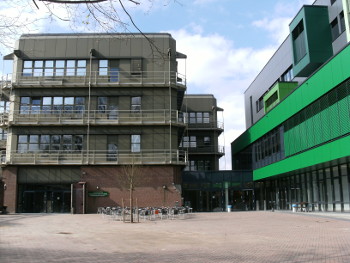 Accommodation:
Accommodation:
 A hotel contingent has been reserved at the
A hotel contingent has been reserved at the
Ibis Hotel Alsterring
Pappelallee 61
22089 Hamburg
Phone: +49/40/65/8020
Fax: +49/40/65/26603
H3282@accor.com
Single Room: 80 Euro per Night
Double Room: 100 Euro per Night
breakfast included
Please refer the the Euro Fed Lipid contingent to get the mentioned price
From station "Hasselbrook" take S-Bahn line S1 direction "Wedel". 12 stations to "Klein Flottbeck"
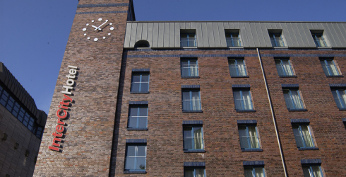 A second contingent ia availabe at the Intercity Hotel Altona, located directly at the ICE train station Altona.
A second contingent ia availabe at the Intercity Hotel Altona, located directly at the ICE train station Altona.
Paul Nevermann Platz 17, 22765 Hamburg
Phone +49 40 38034-0
Fax +49 40 38034-999
hamburg-altona@intercityhotel.de
Single Room: 128 Euro (looking at the station) or 138 Euro looking at the street.
Refer to code "Euro Fed Lipid 280513"
From station "Altona" take S-Bahn line S1 direction "Wedel". 3 stations to "Klein Flottbeck"
Few rooms at 91,97 ¤ are available at the Mercure Hotel Hamburg am Volkspark, Albert-Einstein Ring 2,
22761 Hamburg, Phone +49 40 899 520, Fax +49 40 899 52 333, h1659@accor.com
Please refer to the contingent "Microbial Lipids"
Motel One offers rooms for 79 Euro excluding breakfast:
Motel One Hamburg-Altona
Kieler Straße 171, 22525 Hamburg
Phone: +49 (40) 897 20 69-16, Fax: +49 (40) 897 20 69-10
res.hamburg-altona@motel-one.com
Please refer to the contingent "Microbial Lipids"
Map of the S-Bahn in Hamburg
The city of Hamburg maintains a hotel accommodation service, that you can reach here:
http://english.hamburg.de/accommodation/
It is recommended to chose a hotel close to a station of S-Bahn line 1
Travel Information:
Arrival by air:
With more than 170,000 flights and around 12 million passengers per year, state-of-the-art Hamburg Airport is served by many
German and foreign airlines. Almost all large German cities and European metropolises are accessible within between one and
three hours. Non-stop intercontinental services, for example with the Asia hub Dubai (Emirates Airlines) and the America hub
New York (Continental Airlines, Emirates Airlines) open Hamburg to the world. The Airport Express reaches the city centre
from the airport's location in Fuhlsbüttel within 20 minutes and a rapid transit S-Bahn.
www.ham.airport.de
Arrival by rail:
With its four long-distance rail stations - Hauptbahnhof (centre), Dammtor (centre), Altona (west) and Harburg (south) -
Hamburg is perfectly embedded in the European high-speed train network. Descend at Hauptbahnhof or Altona and change to S-Bahn line 1
With Hamburg as the main rail hub for Northern Germany, all the main cities in Germany can be reached within a few hours
(e.g. Munich in 6 hours, Stuttgart in 5 hours, Cologne in 4 hours, Frankfurt in 3 hours) and so can the Northern European
metropolises of Copenhagen and Stockholm.
www.bahn.de
Arrival by car:
Hamburg is also a north German hub for road traffic. Both south Germany and Scandinavia can be quickly reached from
the Hamburg metropolitan region by the A7 motorway, while the A1 (Lübeck-Bremen-The Ruhr) links Hamburg with the Baltic
and West Germany, the A24 leads to Berlin and Eastern Europe and the A23 (towards Heide) directly to the North Sea.
Hamburg
[updated 04.07.2013]
(text cited from http://english.hamburg.de)
|
The Free and Hanseatic City of Hamburg, one of the 16 states of the federation, is the second largest city in Germany
with its 1.7 million inhabitants. In this sense, it is a city as well as a state.
Hamburg has 2,302 bridges - more than Venice and Amsterdam combined. With over 90 consulates,
Hamburg is second only to New York City.
|
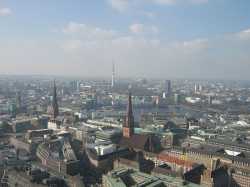 Autor Marcus Meissner, Wikipedia
Autor Marcus Meissner, Wikipedia |
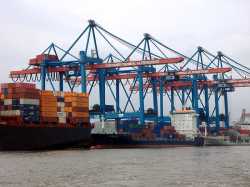
Vwpolonia75 (Jens K. Müller)
|
Flowing through Hamburg, the Elbe river joins the Hanseatic city to the North Sea.
There are numerous ways to explore, including sightseeing boat tours and casual strolls along the banks of the river.
Boat sightseeing trips of the harbour are particularly popular, with most departing from the jetties at Landungsbrücken.
Even with the HVV-ferry can a visitor travel across to the opposite shore.
|
|
On the Reeperbahn, Hamburg's red-light district rubs shoulders with restaurants, bars, theatres and nightclubs.
The street's nightlife has something for everyone and is the first stop for every nightowl.
If you were to visit this Hamburg neighbourhood during the day, you would find a rather quiet street with a few shops,
and you would perhaps wonder why there were so many closed doors.
But when it gets dark, St. Pauli springs to life: neon signs flashing everywhere in competition.
|
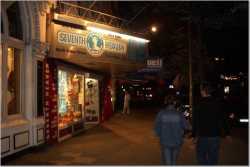 Source Wikipedia, Author LiangHH
Source Wikipedia, Author LiangHH |
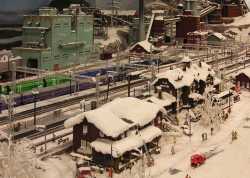
Source Wikipedia, Holger.Ellgaard
|
Since its opening in 2000, The Miniatur Wunderland has become one of the tourist highlights of the Hanseatic city.
The world's largest model railroad system is a must see for every Hamburg visitor.
The Miniatur Wunderland is the largest model railway system in the world. Visitors can admire different countries
and even an airport in miniature. Up until now the sections Hamburg, Harz, Austria, America and Scandinavia are completed.
There are also open construction sites, so the visitors can observe and understand the construction.
|
Organiser
[updated 09.05.2014]
Universität Hamburg
European Federation for the Science and Technology of Lipids e.V.
Postfach 90 04 40
60444 Frankfurt/Main
Phone: +49 69/79 17-533
Fax: +49 69/79 17-564
E-Mail:
info@eurofedlipid.org
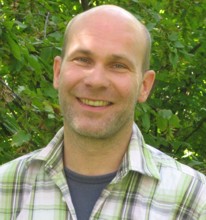

 A hotel contingent has been reserved at the
A hotel contingent has been reserved at the




